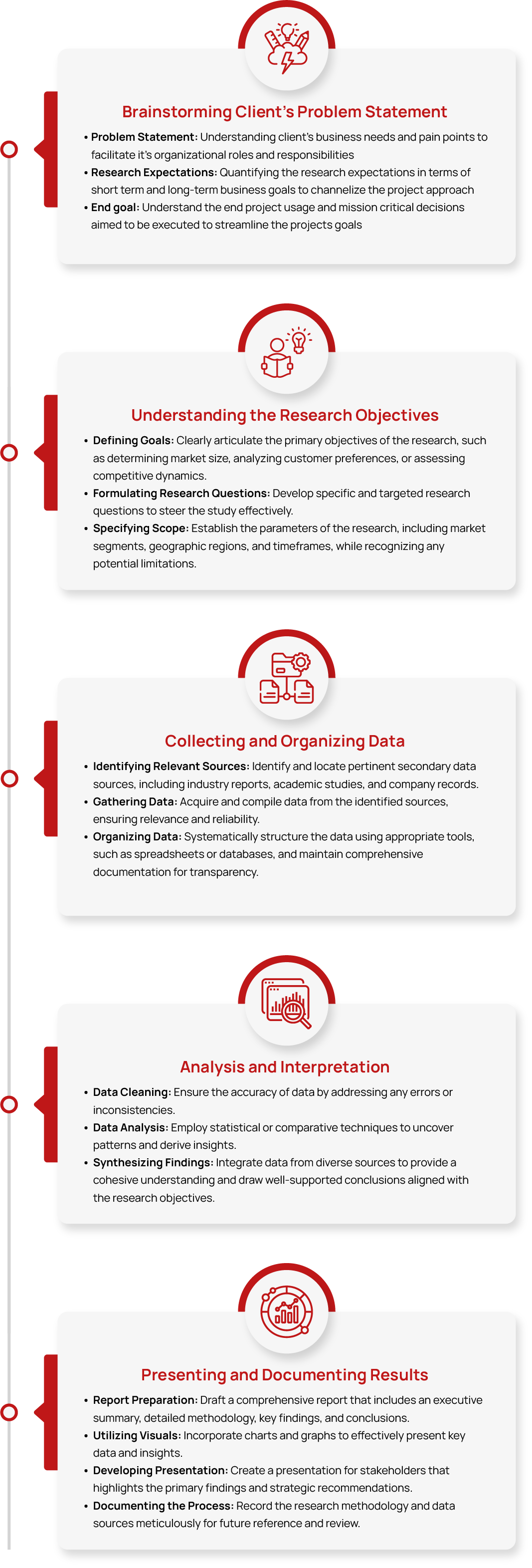Global Edible Insects Market Size, Share & Growth and Trend Analysis Report, 2032
- Summary
- Market Landscape
- Methodology
- Table of Contents
Global Edible Insects Market Size, Share & Growth and Trend Analysis Report, By Product Type (Crickets, Mealworms, Black Soldier Flies, and Others), By Processing Method (Whole Insects, Powder, and Protein Bars), By End Use (Human Food, Animal Feed, Pharmaceutical, and Others), By Distribution Channel (Online and Offline), and Region Forecasts (Asia Pacific, Europe, North America, Latin America and Middle East & Africa), 2024 – 2032.
The Edible Insects market represents an emerging sustainable protein source that addresses both nutritional needs and environmental concerns. This market encompasses the cultivation, processing, and distribution of edible insects for human consumption and animal feed, offering a promising alternative to traditional protein sources.
The Global Edible Insects’ market was valued at approximately USD XX billion in 2024. It is projected to grow to USD XX billion by 2032, with a compound annual growth rate (CAGR) of estimated 20% from 2025 to 2032.
Industry Trends
The edible insects’ market is driven by several factors, including the high nutritional value of edible insects, as they are rich in protein, essential amino acids, and healthy fats. Growing environmental concerns and the need for sustainable food sources have boosted demand, as insect farming requires significantly fewer resources than traditional livestock. Rising global population and increasing food security concerns are also pushing alternative protein sources into the mainstream.
Additionally, shifting consumer preferences toward novel and eco-friendly foods, along with growing awareness of the health benefits, are contributing to market expansion. Government support, regulatory approvals, and investments in insect farming technology are further enhancing market growth. The use of edible insects in animal feed, pet food, and processed food products is also opening new revenue streams for industry.
However, the insect protein market faces several challenges, including consumer perception and cultural resistance, as edible insects are not widely accepted as food in many regions. Regulatory hurdles and lack of standardized safety guidelines also limit market growth. Additionally, large-scale production faces difficulties in maintaining cost efficiency, scalability, and consistent quality. Supply chain limitations, such as processing infrastructure and storage challenges, further hinder widespread adoption.
Industry Expert's Opinion:
- Antoine Hubert, Co-founder and CEO, Ÿnsect
“We are very much like a vertical farming business in how we operate, and we have the same issues around the HVAC systems we use to control the environment”. “We’ve developed a deep knowledge and process in this area that could be useful for other sectors at a high level. We have very complex systems for temperature, moisture control; conveyor systems to feed and harvest the insects as well as collect the frass and mature for our fertilizer product and remove the dead with various separation technologies.”
- Miha Pipan, Co-founder and CSO, UK-based BSFL farmer Better Origin
“A lot of people say you’re just sprinkling some maggots on food waste, how hard can it be? But, if you want to do it consistently on a scale, it’s an intricate combination of biology and engineering. If you jump too quickly into the deep end of the pool, you’ll get into difficulties.”
- Dr. Frank Hiller, CEO, Big Dutchman
"The potential of larvae is huge. This is because they produce high-quality protein from otherwise hardly usable residues, which are ideal as animal feed. The alternative protein source can permanently replace a significant proportion of the soya imported to Europe. For this reason, Big Dutchman has pooled its existing expertise in the field of insect farming and production in Better Insect Solutions, which was founded in 2020. The company, which specializes in complete solutions for insect farming, will be presenting its systems at the Inhouse Farming - Feed & Food Show".
TT Consultants’ Perspective
The future of the edible insects’ market looks promising but will require gradual consumer acceptance, driven by awareness campaigns and regulatory support. Growth is expected to be steady, with increased adoption in processed foods, animal feed, and pet food rather than direct consumption. Advances in farming technology and automation will help reduce production costs, making insect-based products more competitive with traditional proteins.
However, cultural resistance in many regions will remain a significant barrier, limiting rapid expansion. Regulatory frameworks will need to evolve to ensure safety and standardization, which could either accelerate or delay market growth. Investments in research and product diversification will be key to mainstreaming insect-based nutrition. While long-term prospects are strong, mass adoption will likely take decades rather than years.
Market Segmentation
1. By Product Type (Crickets, Mealworms, Black Soldier Flies, and Others)
The cricket segment dominated the global edible insects’ market with a XX% revenue share in 2024, maintaining its leadership due to several key factors. Crickets are highly nutritious, offering a rich source of protein, essential amino acids, and micronutrients, making them an attractive alternative to traditional protein sources. Their ease of farming, requiring minimal land, water, and feed compared to livestock, further enhances their market position. Additionally, growing consumer acceptance, particularly in Western markets, has led to increased incorporation of cricket-based ingredients in protein bars, snacks, and powders.
Meanwhile, the Black Soldier Fly segment is expected to register the highest growth rate between 2025 and 2032, primarily due to its superior feed conversion efficiency and sustainability benefits. Unlike crickets, which are primarily consumed by humans, Black Soldier Fly larvae are gaining traction in animal feed, particularly for poultry, aquaculture, and pet food.
Their ability to thrive on organic waste and convert it into high-protein biomass makes them a cost-effective and eco-friendly solution for the feed industry. With rising global demand for sustainable and alternative protein sources in livestock farming, the Black Soldier Fly segment is poised for rapid expansion in the coming years.
2. By Processing Method (Whole, Powder, and Protein Bars)
The powder segment held the largest revenue share of XX% in 2024, reflecting its versatility and widespread application in the food industry. Edible insects in powder form, particularly those made from crickets and mealworms, are easily incorporated into protein shakes, baked goods, pasta, and even pet food.
Additionally, the powder form helps overcome psychological barriers associated with whole insect consumption, as it blends seamlessly into traditional food products without altering taste or texture significantly. This has driven strong adoption across health-conscious consumers and functional food markets.
Meanwhile, the protein bars segment is projected to experience rapid growth during the forecast period, driven by the increasing demand for convenient, high-protein snack options. As consumers seek sustainable and nutritious alternatives to conventional protein bars, insect-based protein bars are gaining traction due to their rich nutrient profile and eco-friendly production.
The rising trend of fitness and wellness, coupled with growing acceptance of novel protein sources, is expected to further propel the growth of this segment in the coming years.
3. By End Use (Human Food, Animal Feed, Pharmaceutical, and Others)
The human food segment shows promising growth potential, particularly in regions with progressive food regulations and growing acceptance of alternative proteins.
The animal feed segment led the global edible insects market in 2024 and is expected to maintain its dominant position throughout the forecast period. This growth is driven by the aquaculture industry's demand for sustainable feed alternatives and the poultry sector's interest in insect-based feeds.
4. By Distribution Channel (Online and Offline)
The online segment captured XX% of the global edible insects market share in 2024, driven by direct-to-consumer sales and the ability to educate consumers about product benefits through digital platforms. The offline segment maintains importance in regions with traditional insect consumption patterns and is growing through specialty health food stores and supermarkets.
Competitive Scenario
The edible insects market is becoming increasingly competitive, with numerous startups and established food companies exploring insect-based products for human consumption, animal feed, and pet food. Companies are focusing on innovation in product development, such as protein powders, energy bars, and snacks, to attract health-conscious consumers.
Strategic partnerships, mergers, and acquisitions are shaping the market, enabling firms to expand their reach and improve supply chain efficiency. Investments in large-scale farming technologies and automated processing are driving cost reductions and improving product consistency.
Branding and marketing efforts are crucial, as companies work to overcome consumer skepticism and position insects as a sustainable protein alternative. Regional markets vary in competitiveness, with stronger adoption in regions where entomophagy is culturally accepted. Regulatory compliance and safety certifications play a vital role, as companies strive to gain consumer trust and secure market access.
The market features a mix of traditional insect farmers and innovative food technology companies. Key market players include Aspire Food Group, Protix, Entomo Farms, Ynsect, and InnovaFeed. These companies are investing in automation, scaling production, and product development to maintain market position. Other notable players include Beta Hatch, Enterra Feed, AgriProtein, Hexafly, and Thailand Unique among others.
Recent Developments and Strategic Activities:
- In December 2024, Ynsect has set a new benchmark in the agriculture sector, securing a record USD 425 million in funding—the largest ever for a non-American agribusiness. With this investment, the company is constructing the world's largest vertical insect farm in Hauts-de-France, expected to generate 500 jobs and produce 200,000 tonnes of ingredients by 2023. Holding 40% of global patents in insect protein, Ynsect leads in innovation with a sustainable, carbon-negative approach. Their expansion into North America and commitment to resource-efficient farming reinforce their pivotal role in the future of food production.
- In September 2024, UK-based startup Tuggs secured Euro 1.1 million (USD 1.46 million) in funding to expand its fresh, edible insect snacks dog food line, following a tripling of revenues over nine months. The company, which launched in 2022 as the UK's first provider of fresh dog food made from black soldier fly larvae, operates on a direct-to-consumer subscription model and has sold over 350,000 meals to date. The new investment will support scaling production, diversifying product offerings, and enhancing customer service.
- In June 2024, The International Finance Corporation (IFC) has invested USD 2 million in ProNuvo, a Costa Rica-based company specializing in insect-based protein for animal feed. This investment aims to promote sustainable agriculture and strengthen the circular economy in Latin America and the Caribbean by reducing organic waste and providing an eco-friendly alternative to traditional feed sources.
- In May 2023, Lidl Ireland introduced "Insect Burgers" as part of its My Street Food range, priced at Euro 2.99 for a pack of two. These burgers are made with textured soya flour and dried mealworm larvae. This launch follows the European Union's approval of mealworms for human consumption in 2020. Currently, Lidl UK has no plans to stock these insect-based products.

Please fill out the form to request the ToC and gain access to detailed insights in the report.
Request Table of Contents







